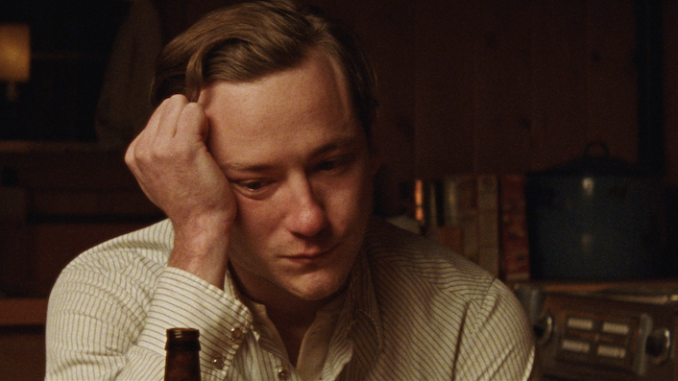
From the opening shots of Max Walker-Silverman’s Lefty/Righty we’re presented with a recognizable setting, the American west. A backdrop that is all too familiar and is often associated with ruggedness and grit. A lone rider trots in on a long road, but he’s not carrying a gun or smoking a cigarette, he’s holding a silver foil helium balloon that reads, “get well soon.†This kind of subversiveness is where “Lefty/Right†shines.
It’s the story of a father, like any other, trying to make a connection with his estranged daughter in the face of tragedy. Simple enough. But part of what makes this simple narrative work is it’s setting. At its heart is the shared experience of an American family but set in what some would consider an unexpected place. Silverman’s background, growing up in these kinds of locations and his fascination with the modern American west is more than evident when considering Lefty/Righty. Not only in his attempt to “normalize†or bring to light the idea that, everyone, from those in the vast and open rural west, to those living in a major metropolis, share the same struggles; but also in his ability to visually show the modern West in the best possible light, keeping the shots simple and letting the simplicity and natural beauty do most of the narrative legwork. The film is beautiful, point blank. And not because it’s as clear and detailed as today’s digital image can provide, but in fact, the opposite. The film is shot with anamorphic lenses and super 16mm film, which give it the scope and grit of the true western American experience. Out there, things are dirty. They’re uneven and imperfect. But they’re beautiful. And the film strives and succeeds in portraying that.
With all that said, themes and images soar but does the story hit home? Does it work? The answer is yes, in spades. The film is moving but not pandering, humorous but not at the expense of weight. The relationship that the film paints between Righty and his estranged daughter Lefty is as real and emotional as one could ask for. There’s no heavy-handed metaphors, no distracting imagery, just a real story about the difficulties of family. Now, that’s not to say that there aren’t motifs to be seen, you’re just not beaten over the head with them. The concept that through the tragedy of losing his father, Righty ends up becoming a proper one himself, is simply beautiful.
To see the idea that he is a great son to his own father, better than most (as seen by him repeatedly being the messenger to “give him my bestâ€) yet is struggling to be a proper father himself says so much about the pressure of what is expected in the shift of generations. While the film is beautifully shot and directed, what’s a great film without solid performances and the whole cast, but specifically the two leads, more than deliver. Lewis Pullman as Righty brings such a real-life sensitivity to the character. His soft yet unsure expressions and tone really work to show that this character is a good guy who just wants to do the right thing. Maybe he wasn’t ready, maybe he’s still not, but there are no two ways about it, he cares. It’s refreshing to watch a character learn and develop in such a real way. He’s just trying to figure things out, for his daughter and for himself and it results in a sympathetic heartfelt portrayal.
Lefty, played by newcomer Marty Grace Dennis, is as real and natural a six year old as one could ask for. No overplaying for cuteness, no attempt at false emotion. Lefty is just a kid, a real kid. Shy, curious, not much to say, which, anyone who has tried to talk to a six year old girl knows, is right on the nose. Part of me almost wishes she had more to say, but that’s only because all of her dialogue was so real. In reality, her portrayal was perfect.
Lefty/Righty is about everyone. It’s about finding common ways to connect even in the rural west. At a certain point, Righty brings his daughter to see “the tallest mountain in the state†not to the foot of it, not to the top. Just outside, to see it on the horizon. A horizon that can be viewed from anywhere, yet it brings her peace, which she later uses as a way to connect with her uncles; beauty in simplicity. And that, at its core is what Lefty/Righty is. A deceptively simple modern parable about the common American experience, family.

Leave a Reply